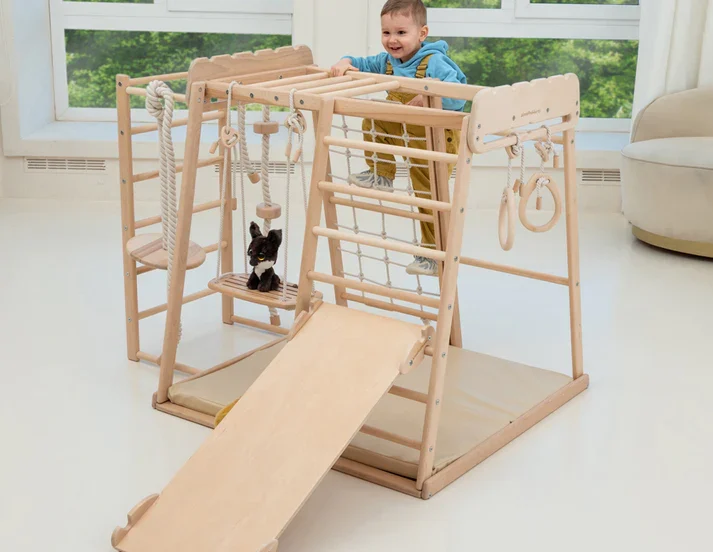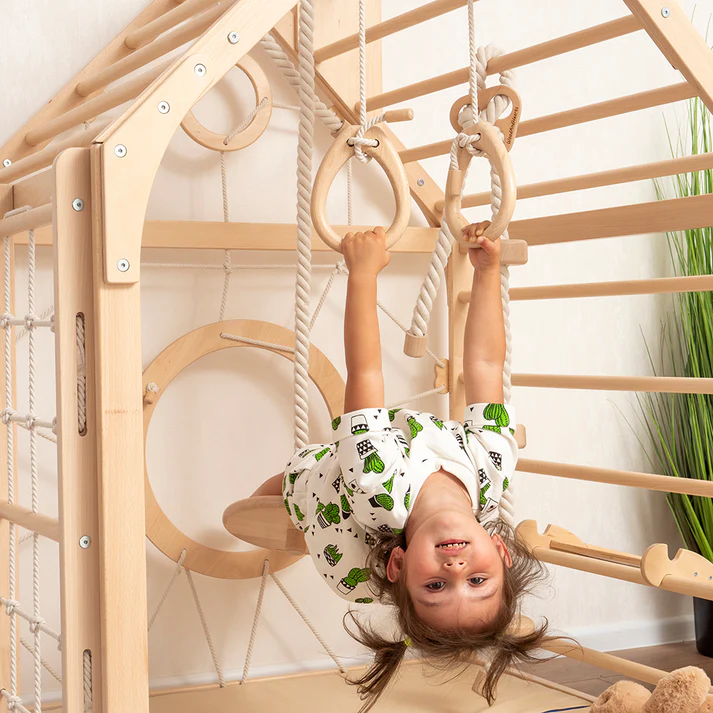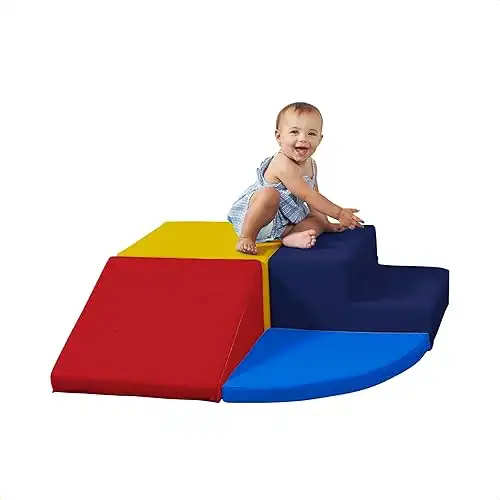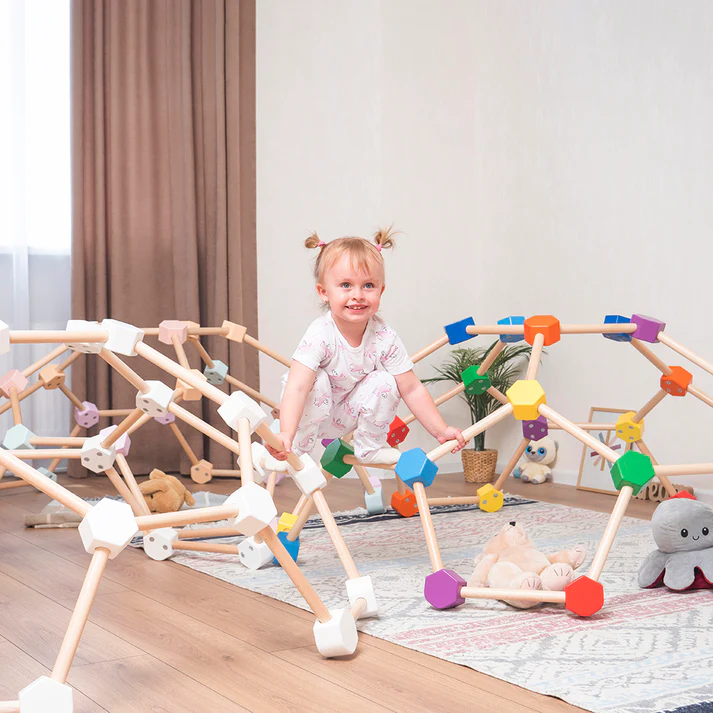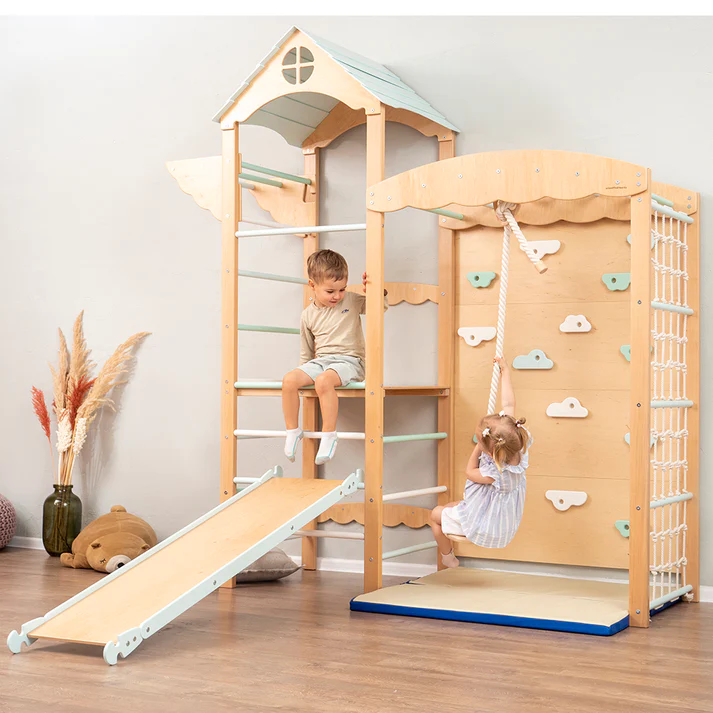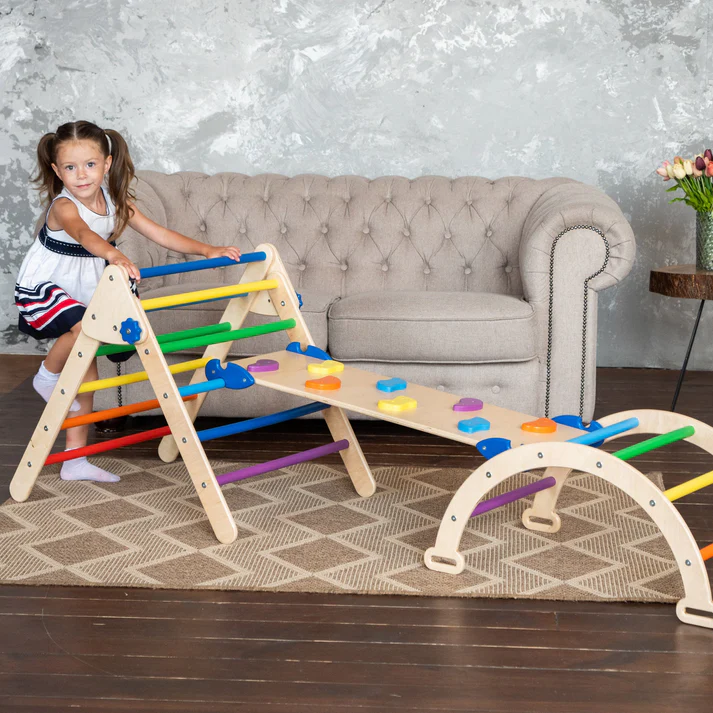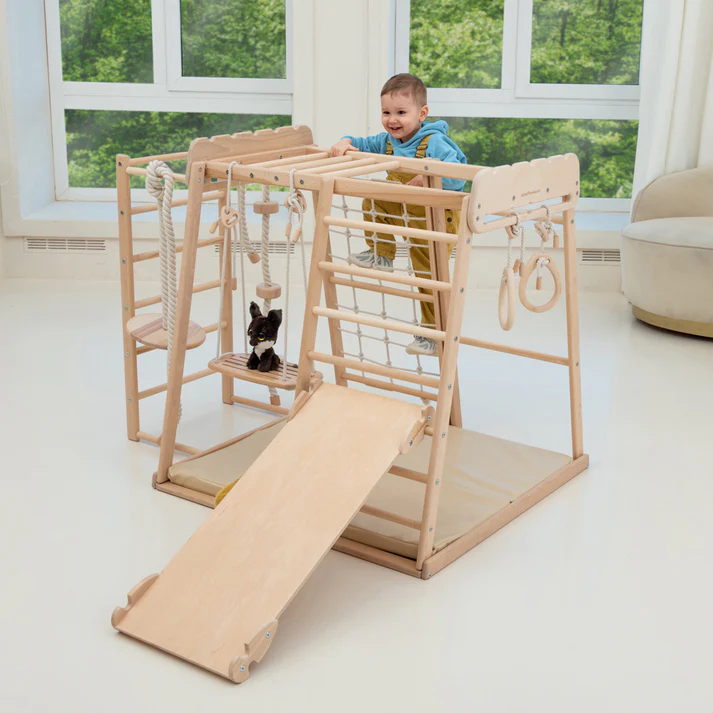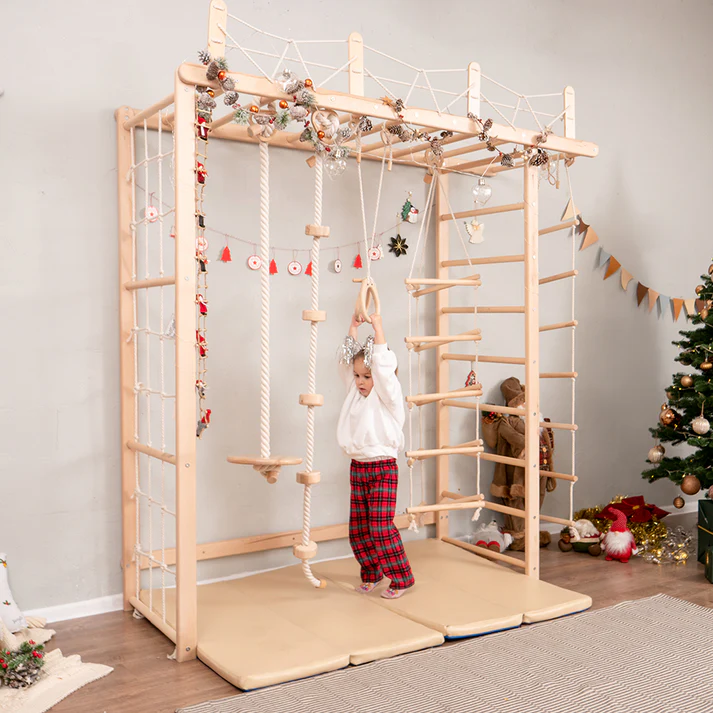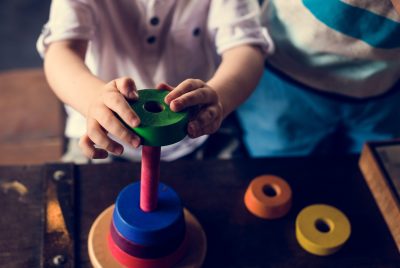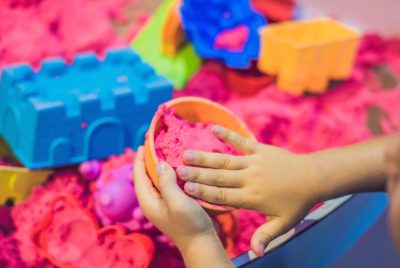Toddler Climbing Toys to Boost Physical and Mental Growth
I’m always on the look-out for ways to support my childrens development, and a fantastic way to do this is through climbing toys. These toys not only provide endless hours of fun but also play a crucial role in enhancing gross motor skills and balance in your little ones. In this article, I’ll dive into why toddler climbing toys are so important for child development, explore various types of childrens climbing toys, offer safety tips, and suggest some top climbing toys for your little one.
In This Article
Why Toddler Climbing Toys Are Important
Kids climbing toys play a vital role in the growth and development of our toddlers. They are more than just a source of entertainment; they are essential tools that contribute to physical, cognitive, social, and emotional development. Let’s delve deeper into the many benefits these toys offer.
They Enhance Childrens Physical Development
Development Of Gross Motor Skills: During the toddler years, children are in a critical phase of developing their gross motor skills. Kids climbing toys facilitate this by encouraging movements that involve large muscle groups. When they climb, they engage their arms, legs, and torso, which helps to strengthen these muscles. This muscle strengthening is essential for milestones like walking, running, and jumping.
Developing Core Strength: Climbing requires the use of core muscles to stabilize the body. When toddlers engage in climbing activities, they naturally strengthen their abdominal and back muscles, which are essential for maintaining balance. A strong core helps children stay upright and move with greater control and stability.
Improving Coordination: As children navigate climbing structures, they learn to synchronize their limbs, improving their overall coordination. Balance is another key area of development that climbing toys address. Balancing on a climbing frame or moving from one step to another helps toddlers understand their body’s center of gravity, which is crucial for their physical confidence and ability.
Enhancing Dynamic Balance: Unlike static balance, which involves maintaining a still position, dynamic balance is about staying balanced while moving. Climbing toys provide excellent opportunities for practicing dynamic balance. As toddlers climb up and down, they learn to balance their body weight during movement, which is essential for activities like walking, running, and playing sports
They Can Improve Cognitive Development
Problem Solving: Kids climbing toys also have a significant impact on cognitive development. When a child approaches a climbing structure, they are presented with a puzzle that requires solving. They need to figure out how to ascend and descend safely, which involves planning and executing a sequence of movements. This process enhances their problem-solving skills.
Spatial Awareness: Climbing requires children to make decisions about where to place their hands and feet, fostering critical thinking. As they navigate these toys, they develop spatial awareness, understanding concepts like “over,” “under,” “through,” and “around.” This spatial awareness is foundational for later learning in subjects such as mathematics and science.
Understanding Body Positioning: As children climb, they constantly adjust their body position to maintain balance. This process helps them develop a keen sense of proprioception—the ability to sense the position and movement of their body parts. Proprioception is critical for balance and coordination, enabling children to navigate their environment more effectively.
They Aid In Social and Emotional Development
Sharing and Cooperation: The social and emotional benefits of childrens climbing toys are often overlooked, but they are equally important. When children play on climbing structures, especially in group settings, they learn valuable social skills. They practice taking turns, sharing space, and sometimes even cooperating to solve a climbing challenge. These interactions are crucial for developing social competence and building relationships.
Self-Expression and Confidence: On an emotional level, climbing toys can boost a child’s confidence and self-esteem. Successfully navigating a climbing structure, no matter how small, gives them a sense of accomplishment. This confidence encourages them to try new things and tackle more significant challenges, fostering a growth mindset. Overcoming climbing challenges also helps children manage and cope with frustration, building resilience.
Our Top Picks For Toddler Climbing Toys
When choosing climbing toys for your children, it’s essential to select options that are both appropriate and safe. Here are some of the best types of climbing toys for young toddlers that we have found:
Foam Climbing Blocks
Soft climbing blocks are an ideal infant climbing toy. Made from foam and covered with a soft, durable material, these blocks can be stacked and arranged in various configurations, allowing toddlers to crawl, climb, and explore safely. These blocks are excellent for developing motor skills and balance without the risk of injury from falls.
Climbing Domes
Climbing domes and gyms provide a more structured climbing experience. Typically made from wood, these structures feature multiple climbing options such as bars and ladders. They offer a great way for toddlers to build strength and coordination while providing ample opportunities for imaginative play.
Toddler Climbing Wall
Toddler climbing walls are small-scale versions of larger climbing walls, designed specifically for young children. They often feature easy-to-grip holds and a low height to ensure safety.
These walls help improve hand-eye coordination, strength, and problem-solving skills as toddlers figure out how to navigate the climbing holds.
Wooden Pikler Climbing Triangle
A classic choice, the wooden climbing triangle is sturdy and offers various climbing challenges for your child. It’s great for developing balance and strength and can be used both indoors and outdoors.
Indoor Jungle Gym
This indoor jungle gym offers many benefits for kids, perfectly aligning with Montessori principles to foster holistic development.
Through active play on the jungle gym, children can enhance their gross motor skills, as climbing, swinging, and balancing boost physical strength and coordination.
As they explore and engage independently, their self-independence and confidence grow. Rain or shine, this indoor jungle gym provides a safe and exciting space for active play, ensuring that children can enjoy enriching experiences at any time.
How to Encourage Use Of Toddler Climbing Toys
Introducing toddler climbing toys to your kiddo can be an exciting yet challenging task. Encouraging them to use these toys requires creativity, patience, and a little bit of strategy. Here are some practical tips to help you engage your child with climbing toys and make the experience enjoyable and beneficial.
Make It Fun and Engaging
Use Colorful Toys: Bright, colorful toys are more likely to capture your child’s attention. Choose climbing toys with vibrant colors and interesting shapes that can stimulate your toddler’s curiosity and make them want to explore.
Incorporate Favorite Characters: If your child has a favorite cartoon character or animal, look for climbing toys that feature these themes. This connection can make the toy more appealing and encourage your child to interact with it.
Create Adventure Scenarios: Turn climbing into a playful adventure. Pretend the climbing structure is a mountain, a pirate ship, or a castle. This imaginative play can make climbing more exciting and help your child see it as a fun game rather than just a physical activity.
Use Music and Sounds: Play their favorite songs or fun, upbeat music while they play. Music can create a lively environment that encourages movement and exploration. You can even sing songs together that involve climbing movements to make it more engaging.
Lead by Example
Demonstrate Climbing: Children often learn by watching us. Show your child how to use the climbing toys by climbing a little yourself (safely and at their level, of course). When they see you enjoying the activity, they are more likely to want to join in. I love taking my boys climbing with me, its a also a great way for us to bond.
Encourage Siblings and Friends: If your child has older siblings or friends, invite them to play together. Watching other children climb and play can inspire your toddler to try it out too. Group play can also introduce a social aspect to the activity, making it more fun.
Be Enthusiastic: Your attitude matters. Show excitement and enthusiasm when you talk about and use the climbing toys. Cheer them on as they climb and celebrate their achievements, no matter how small. Your positive reinforcement can build their confidence and encourage them to keep trying.
Create a Safe Climbing Area
Set Up Indoors and Outdoors: Create a dedicated climbing area both indoors and outdoors. Having multiple locations ensures that your child can engage with the climbing toys regardless of the weather. Indoors, you can use foam mats to create a safe, cushioned surface. Outdoors, you can set up on soft grass or playground flooring.
Use Mats and Padding: Safety is paramount. Place soft mats or padding around the kids climbing toys to cushion any falls. This will make your child feel more secure and willing to take risks and try climbing without the fear of getting hurt.
Create a Routine: Incorporate climbing time into your child’s daily routine. Consistency helps toddlers understand what to expect and builds a habit of engaging with the climbing toys. You can set aside specific times each day for climbing play.
Encourage Independence
Allow Exploration: Give your kiddo the freedom to explore the climbing toys on their own terms. Let them touch, feel, and move around the toys without too much intervention. This autonomy can boost their confidence and interest in climbing.
Provide Gentle Guidance: While it’s important to supervise, avoid being overly directive. Offer gentle guidance and support when needed, but let your child figure out how to navigate the climbing toys. This approach fosters independence and problem-solving skills.
Celebrate Small Wins: Acknowledge and celebrate every small achievement. Whether it’s taking the first step up a block or successfully climbing to the top, positive reinforcement can motivate your child to keep trying and enjoying the activity.
Incorporate Toddler Climbing Toys into Daily Activities
Turn Everyday Objects into Climbing Toys: You don’t always need specialized kids climbing toys. Use everyday objects like cushions, low furniture, or even safe household items to create mini climbing challenges. This can add variety and make climbing a part of daily play.
Combine with Other Activities: If your child enjoys playing with stacking blocks or cars, place these items on top of the climbing structure. This can create an incentive for them to climb and reach their toys.
Integrate Learning: Use climbing time as an opportunity for learning. You can incorporate counting steps, naming colors, or identifying shapes while they climb. This combination of physical and cognitive activities can make the experience more enriching.
Closing Thoughts From Me
Toddler climbing toys are an incredible way to support their physcial and mental development. They offer a plethora of benefits, from enhancing gross motor skills and balance to fostering cognitive and social growth. By choosing age-appropriate climbing toys and ensuring a safe play environment, you can help your child explore, learn, and grow through active play. Remember, the key is to make it fun and engaging, so your little one enjoys every moment of their climbing adventures.
FAQs
What are the best materials for toddler climbing toys? The best materials for climbing toys are non-toxic, durable, and sturdy. Look for toys made from foam, plastic, or wood, with rounded edges and no small parts that could pose a choking hazard.
How often should my child use climbing toys? Your child can use climbing toys daily, as long as they are supervised and the play sessions are kept to a reasonable length to avoid overexertion. Short, frequent play sessions are ideal.
Can toddler climbing toys help with balance? Yes, climbing toys are excellent for improving balance. As your child climbs and navigates these toys, they develop better coordination and balance skills, which are crucial for walking and running.
Are there childrens climbing toys suitable for small spaces? Absolutely! There are many compact climbing toys like mini jungle gyms, soft foam blocks, and adjustable climbing structures that are perfect for small spaces.
How can I make sure my child is safe while using climbing toys for toddlers? Ensure constant supervision, choose age-appropriate toys, and create a safe play area with soft flooring. Also, inspect the toys regularly for any wear and tear to keep them in good condition.

